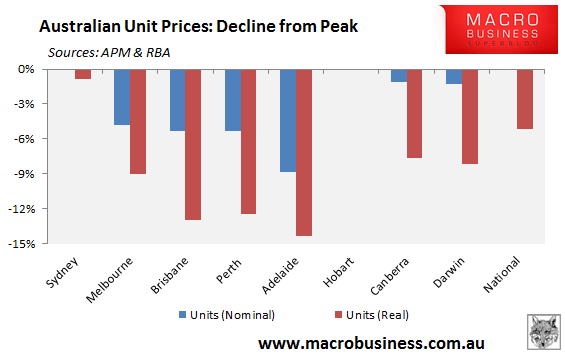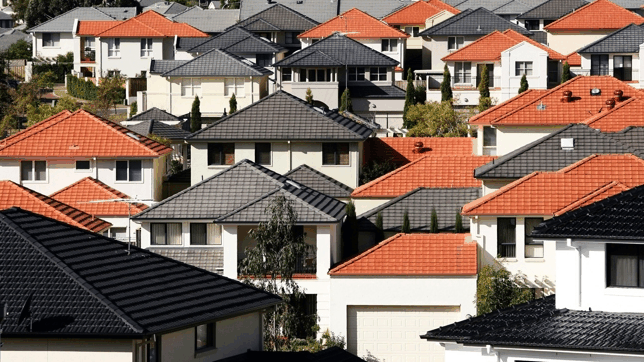
Australian Property Monitors (APM) today released their December 2012 home price results, which registered a solid 1.9%/1.6% (houses/units) rise in values over the quarter and 2.1%/2.4% growth over the year (see below tables).
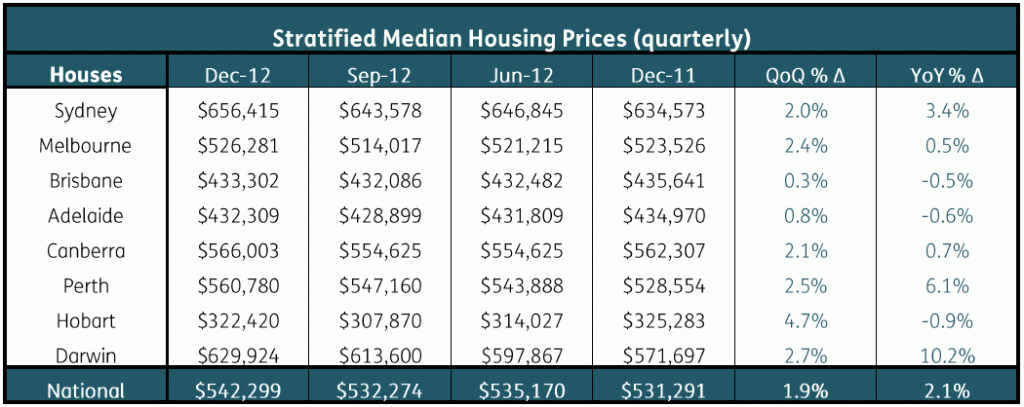
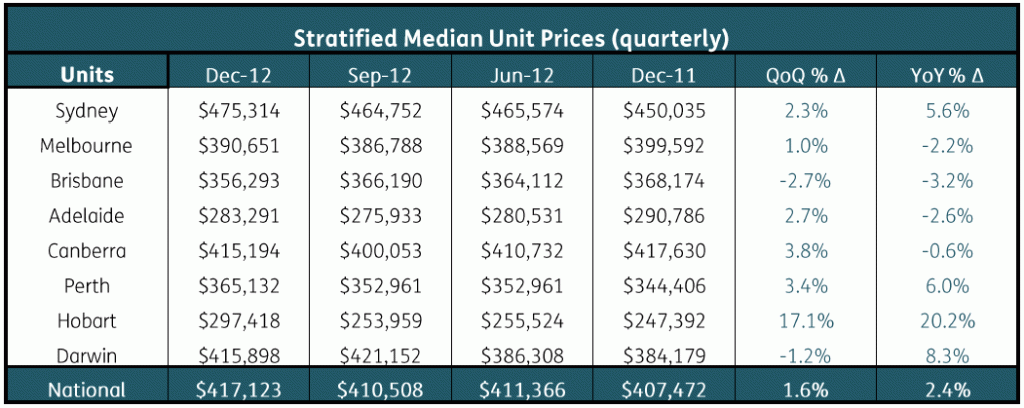
Hobart, Darwin and Perth recorded the highest house price growth over the quarter, with values jumping by 4.7%, 2.7% and 2.5% respectively. The results would have been an even stronger 5.4% (Hobart), 3.2% (Darwin) and 4.4% (Perth) had the previous quarter’s results not been revised upwards by 0.6% (Hobart), 0.5% (Darwin) and 1.8% (Perth) respectively. By contrast, Melbourne recorded the fourth strongest quarterly rise in house values (2.4%), but the result was heavily affected by a -1.9% downward revision to the previous quarter, without which Melbourne house values would have risen by only 0.5%.
The APM release highlights the two speed nature of the Australian housing market, whereby Darwin and Perth recorded strong annual house price growth on the back of the ongoing mining investment boom and tightening supply. Solid annual growth was also recorded in Sydney, where prices outpaced inflation. Elsewhere, however, house price growth remained fairly weak, with values either falling over the year, or growing at rates below inflation.
Another interesting aspect of the APM release is the wide divergence with the RP Data-Rismark daily hedonic index, which recorded a -1.2% fall in dwelling values nationally over the December quarter, with falls recorded in every capital city market except Perth and Darwin (see next table). APM uses a similar stratified median methodology to the Australian Bureau of Statistics (ABS), suggesting that the ABS will also record some growth nationally when its house price index is released next week.
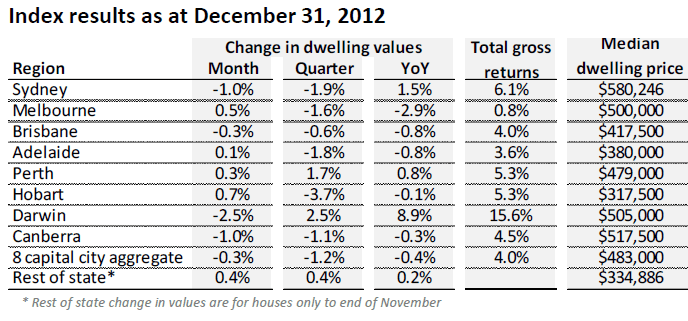
According to APM, house prices nationally remain -3.1% below their peak in nominal terms and -9.0% below peak in real (inflation-adjusted terms), with Sydney the only capital to have exceeded its 2010 peak in nominal terms (although it remains -6.0% lower in real terms). By contrast, losses in Brisbane and Melbourne remain high, with Brisbane down -7.8%/-13.7% (nominal/real) and Melbourne down -7.1%/-12.7% (nominal/real) since peak (see next chart).
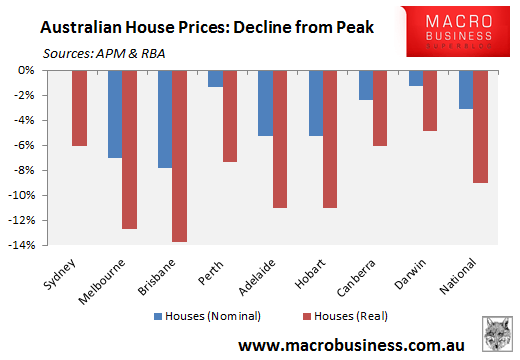
Unit prices have performed better than houses, with national values hitting an all-time high in nominal terms in the latest quarter, although they remain -5.1% below their peak in real terms. There is wide divergence across capital city markets, however, with Sydney and Hobart hitting all-time highs in the latest quarter, whereas values are down significantly in Melbourne, Brisbane, Perth and Adelaide (see next chart).
